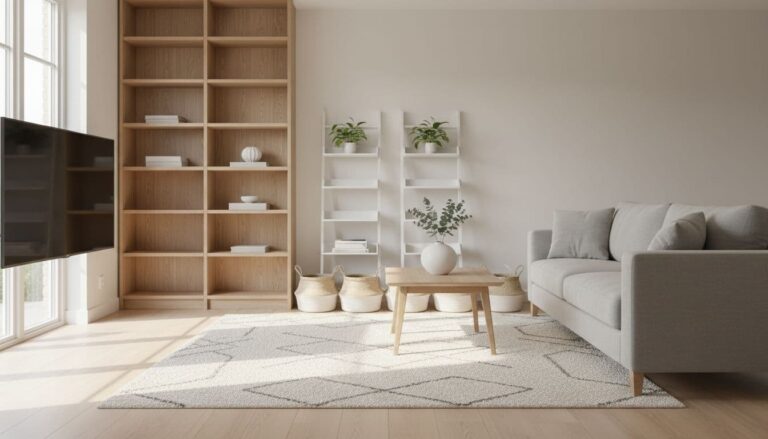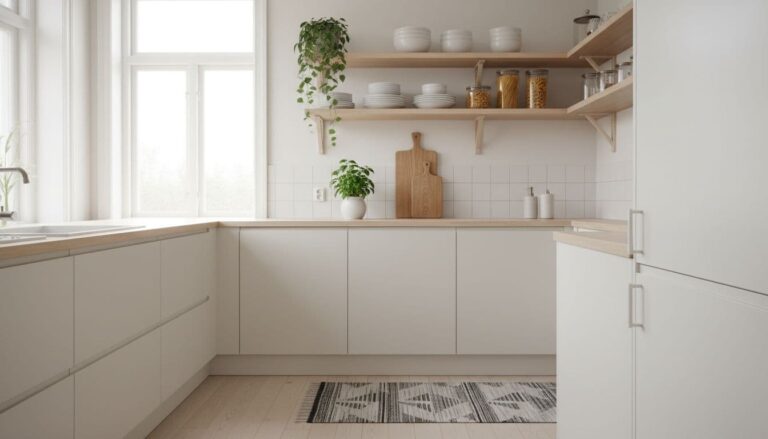Small Living Room Ideas: Simple Styling Tricks To Make It Look Bigger
You stand in your living room, and it feels like the walls are leaning in. The sofa is close, the coffee table is closer, and every step feels like you might bump into something. It is a space you want to love, but right now it feels crowded and a little tense.
You are not alone. Many apartments, townhomes, and small houses have living rooms that feel more like narrow walkways than calm retreats. The good news is that you do not need a bigger home or a big budget to change that. You just need a few simple small living room ideas that work with what you already own.
This guide walks you through layout, color, light, and styling tricks that can make your small living room look bigger, feel lighter, and flow better. Think of it as a gentle reset, not a full makeover. Small shifts, clear choices, and a softer, more open look.
⭐ Key Takeaways: Simple Small Living Room Ideas That Make a Big Difference
- Use light and color to open the room and push the walls outward.
- Plan your layout around clear walkways and a single calm focal point.
- Float some furniture off the walls to create better flow.
- Clear visual clutter so your eye can rest instead of jumping around.
- Use everyday styling habits and small living room ideas to keep the space feeling open over time.
Table of Contents
How Layout Can Make Your Small Living Room Look Bigger
Layout is the base of everything. When the furniture is in the right place, the room feels calm, open, and easy to use. When it is not, even a pretty space can feel tight and stressful.
Think of layout as the path your body and your eye take through the room. You want clear walkways, a simple focal point, and a seating area that supports conversation without blocking movement. This is how a small space starts to feel like a thoughtful living room, not a storage zone for furniture.
Create Clear Walkways So the Room Feels Open
Tight paths and blocked doorways make a room feel smaller right away. When you have to twist or shuffle sideways just to reach the sofa, your brain reads the room as cramped.
Try these steps:
- Pull furniture away from doorways so you are not dodging chair arms as you walk in.
- Line up your main seating so you can walk around it, not through it.
- Keep at least one main path that is about 2 to 3 feet wide from the entry to the seating.
Imagine This:
A guest steps through your front door. They can see the sofa right away and walk to it in a straight, easy line. No bags to bump, no chairs in the way, just a soft path from door to cushion. The room already feels more open, even before they sit down.
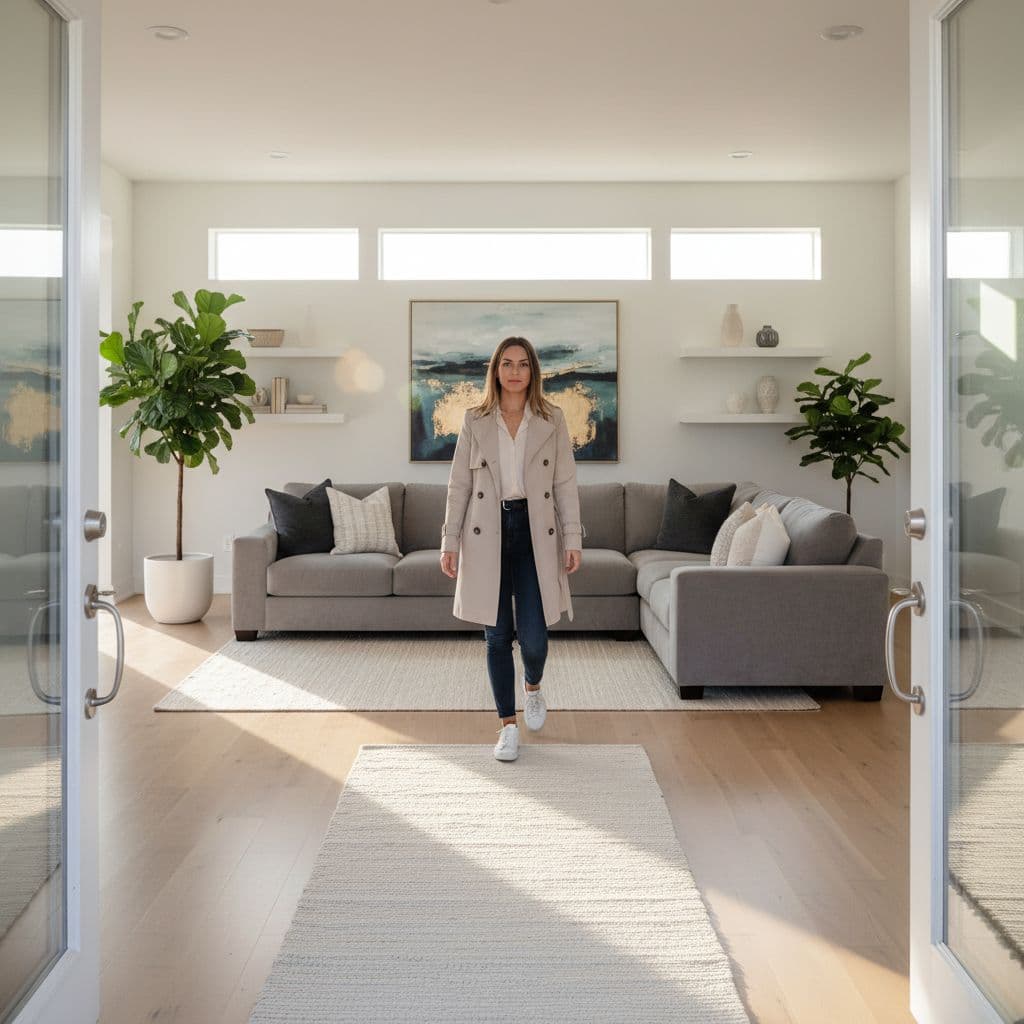
Use a Focal Point to Draw the Eye Across the Room
When your eye knows where to land, a room feels larger and calmer. A focal point can be a window, a piece of art, a simple TV wall, or even a styled shelf. The key is to choose one main spot and let it lead.
Face or angle your seating toward this focal point so the room feels intentional and not random. Keep the area around it cleaner than the rest of the room so it really stands out.
Simple steps:
- Choose one main wall or view to highlight, not three different ones.
- Center artwork or a TV on that wall and keep nearby surfaces more simple.
- Avoid too many “look at me” moments fighting for attention.
Imagine This:
You walk into the room and your eyes go straight to a calm wall. Maybe it has one large art piece or a simple TV with a few items beneath it. The rest of the room feels like it supports that view. The space suddenly feels deeper, like it stretches a bit farther than before.
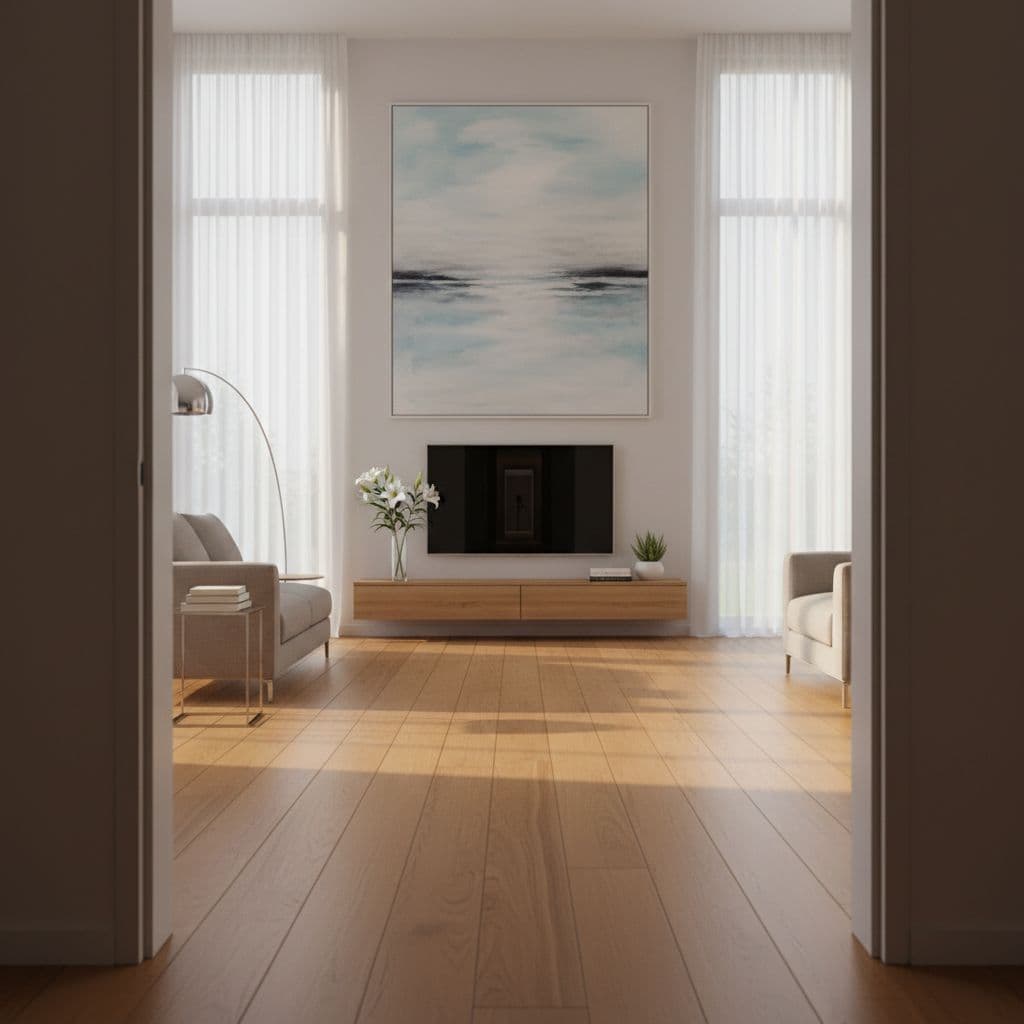
Float Furniture Off the Walls for Better Flow
It feels natural to push every piece of furniture up against the walls to “make space in the middle.” In a small room, this can have the opposite effect. It often makes the room feel stiff and a bit like a waiting area.
Pulling the sofa or chairs a little away from the wall can create a soft island of seating that feels lighter.
Try shapes like:
- An L-shape with a sofa and chair facing each other across a coffee table.
- Two chairs facing a sofa, leaving space to walk behind at least one piece.
- A small gap (even just a few inches) between the sofa and the wall for a sense of breathing room.
Imagine This:
In a small living room, the sofa is no longer glued to the wall. Instead, it sits a few inches forward, with two chairs across from it. The pieces form a cozy island in the middle of the room. You can walk around the outside, circling the seating with ease. The room feels more like a lounge and less like a tight corner.
For a deeper dive into layout patterns and pathways, you can explore more small living room layout ideas in this guide from The Spruce: 17 Small Living Room Layouts That Will Maximize Your Space.
Use Light, Color, and Texture to Visually Open the Room
The colors and surfaces in your living room control how big or small it feels. If you want to know how to make a small living room look bigger, start with what is on the walls, floors, and large pieces of furniture.
Soft, light colors reflect more light and push the walls outward. Calm patterns and gentle textures help your eye glide around the room instead of stopping at every corner. When you layer natural light with soft indoor lighting, the whole space feels brighter and wider.
Choose Light, Airy Colors That Reflect More Light
Light colors bounce light around the room. They make walls feel farther away and blur some of the hard edges. Dark, heavy colors can be beautiful, but in a small room they can make the space feel more closed in.
Try this simple approach:
- Keep large surfaces light, such as walls, big rugs, and the largest piece of seating.
- Save deeper or darker colors for pillows, a throw, or a small art piece.
- Use one soft color family across the room so everything feels tied together.
Imagine This:
A once dark living room, with deep walls and heavy tones, is now painted in a soft, pale shade. The sofa is light, the rug is quiet, and sunlight bounces around the room. The space feels like a bright, calm box of light where your eye can rest anywhere.
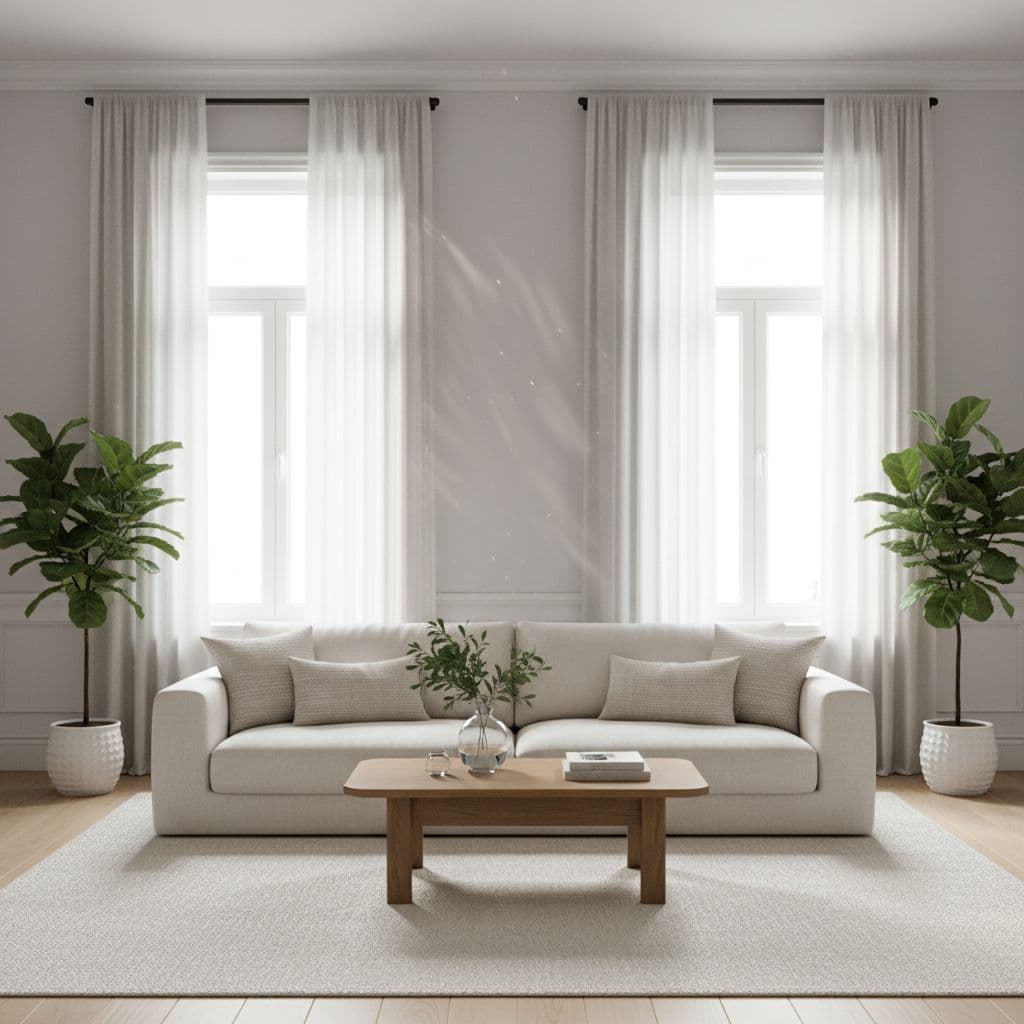
For more ideas about color choices that open up small rooms, you might like this guide from Lowe’s on 10 ways to make a small room look larger with color.
Let in Natural Light and Layer Soft Indoor Lighting
Bright rooms almost always feel larger. Even if your living room does not get a lot of sun, you can still work with the light you have.
Easy steps:
- Pull curtains wide so they sit outside the window frame, not over the glass.
- Keep window sills and the area in front of windows clear of bulky items.
- Use more than one light source, like a ceiling light plus a floor lamp and a table lamp, to avoid dark corners.
Imagine This:
As the sun sets, your small living room still glows. Soft light comes from a lamp near the sofa, another near a chair, and a warm overhead light. No corner disappears into shadow. The room feels warm, gentle, and a little larger than it did before.
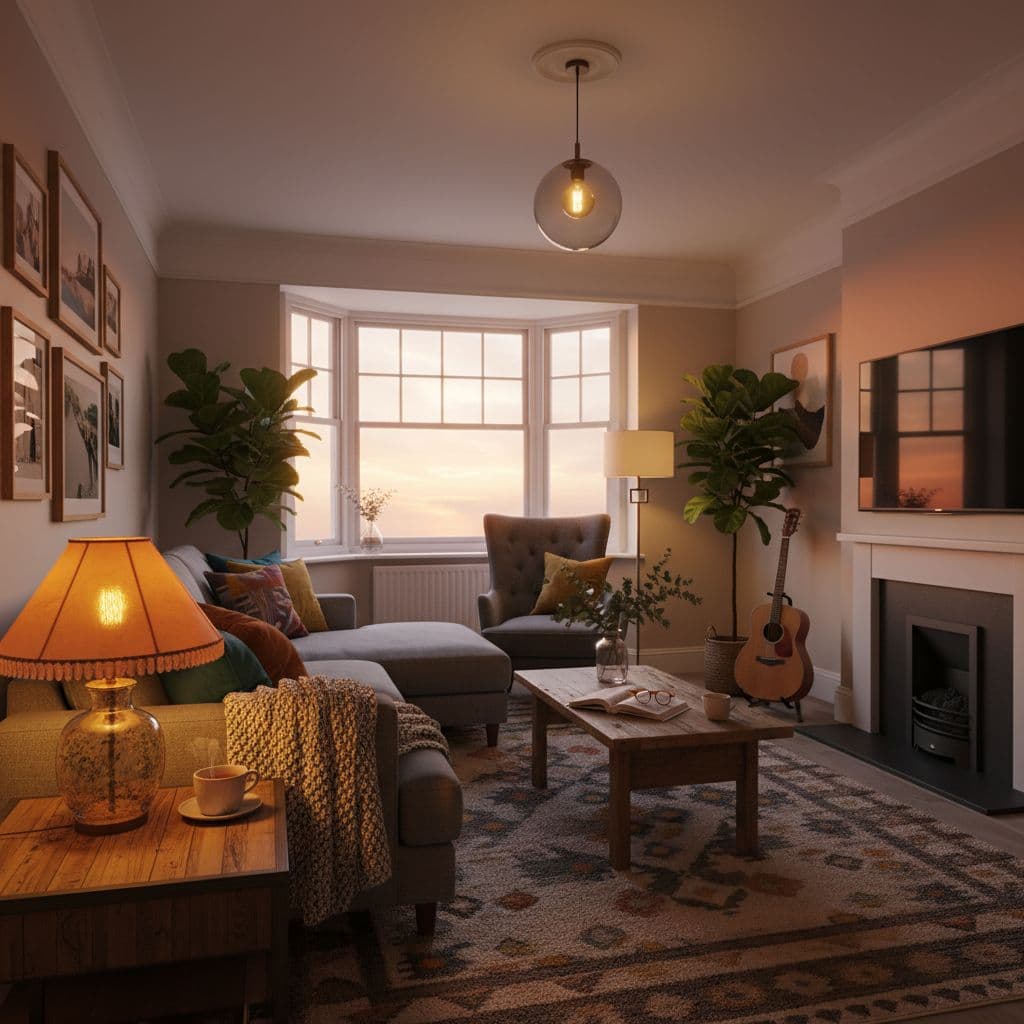
Keep Patterns Calm and Use Texture for Interest
Busy, high-contrast patterns can make a small room feel noisy. Your eye hops from stripe to stripe, spot to spot, and the room seems smaller because there is so much to take in.
You can keep things calm without making the room boring.
Try these guidelines:
- Keep the biggest pieces, like the sofa or rug, more solid or softly patterned.
- Use stronger patterns only on a few small pieces, not on every surface.
- Add interest with texture instead of loud prints, like mixing smooth, woven, and nubby fabrics.
Imagine This:
In your living room, the sofa is a soft solid color, the rug has a gentle, low-contrast pattern, and the pillows mix linen, knit, and smooth cotton. Nothing screams for attention, but the room feels rich and cozy. There is air between the patterns, so the space still feels open and calm.
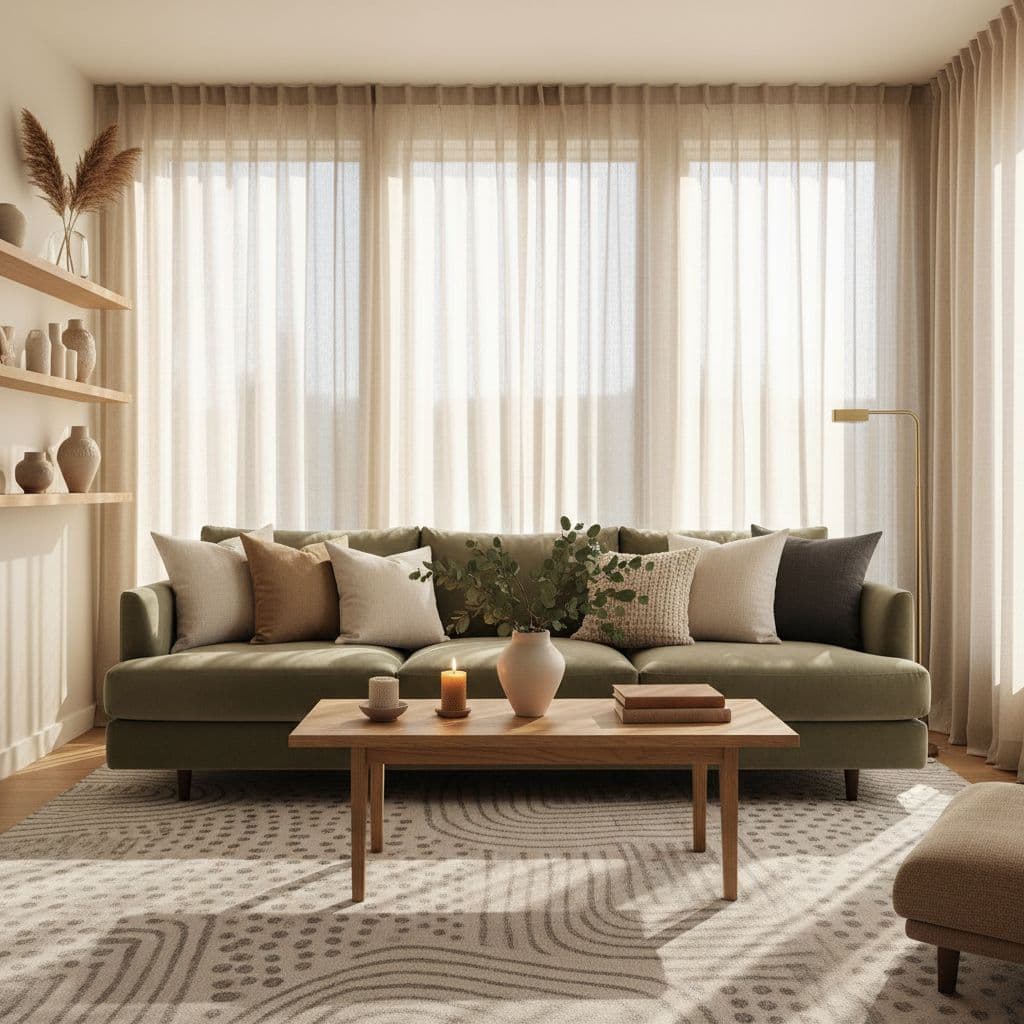
Declutter, Style Smart, and Keep the Room Feeling Light
What you keep in the room, and how you display it, has a huge impact on how big or small the space feels. A few strong pieces with breathing room can feel stylish and airy. A lot of tiny things, even if they are pretty, can crowd the room.
Think of this section as a simple reset. These small living room ideas are less about “decorating” and more about what you see every day and how that affects your mood.
Clear Visual Clutter So Your Eye Can Rest
Visual clutter is anything that makes your eye jump from spot to spot. Stacks of mail, tiny objects covering every surface, or piles that have no clear home can all make a room feel smaller.
Simple habits help:
- Choose one or two main spots for display, like a coffee table and one shelf, and keep the rest mostly clear.
- Group small items together on a tray or in one corner instead of spreading them everywhere.
- Do a quick 5-minute tidy at the end of the day, returning items to their places.
Imagine This:
You look around your living room and notice clean space on the coffee table, a clear stretch of TV unit, and only one simple display on a side table. There is air between objects. The room feels calmer, and so do you. Your eye can glide through the space without getting stuck.
Style Fewer, Larger Groupings Instead of Many Little Pieces
Many tiny objects scattered around a room read as clutter, even if you love each one. A few slightly larger groupings feel more modern and restful.
For surfaces like coffee tables, side tables, or media units:
- Think in triangles or clusters, like a stack of books, a bowl, and a small plant grouped together.
- Leave enough empty space so you can still see plenty of the surface.
- Repeat this idea across the room so your styling feels consistent and simple.
Imagine This:
On your coffee table, there is one calm grouping: a short stack of books, a small bowl, and a simple decorative item. The rest of the table is open. You can set down a drink, place a plate, or rest your hands. The table looks styled but not stuffed, and the whole room feels lighter.

Use the Vertical Space to Draw the Eye Up
When you only decorate at eye level or below, all the interest sits in the middle of the room. Using the full height of the space makes it feel taller and more generous.
You do not need tall furniture to do this.
Try:
- Hanging art a bit higher than you normally would, while still keeping it connected to the furniture below.
- Using tall plants or branches you already own to pull the eye upward.
- Stacking a few items on a shelf or bookcase in a simple, clean line that leads the eye up.
Keep tall areas simple so they feel like clear vertical lines, not crowded stacks.
Imagine This:
In your small living room, your eye starts at the rug, travels up the sofa, and continues to a piece of art hung just a bit higher than before. A tall plant in the corner draws your gaze almost to the ceiling. The room feels taller, like someone quietly stretched the walls.
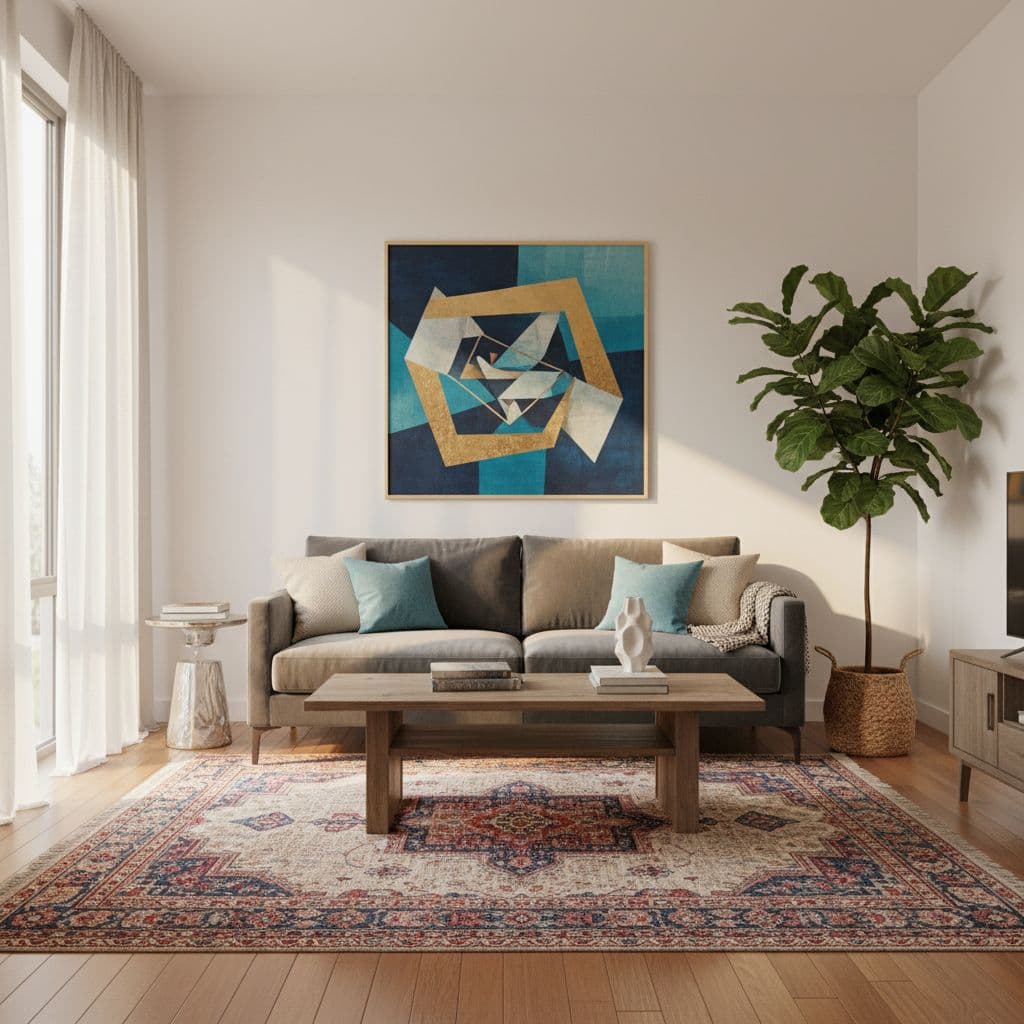
Conclusion
You do not need a big budget or a big room to create a space you love. With a thoughtful layout, soft light and color, and simple styling habits, you can make a small living room look bigger and feel more open. Try one or two ideas first, notice how the room responds, then layer in more changes as you go. Small choices, repeated over time, can turn your living room into a space that feels truly yours.
⭐ Frequently Asked Questions
What wall colors make a small living room look bigger?
Soft, light colors work best, such as gentle whites, light grays, pale beiges, or soft pastels. Keep the walls and trim close in tone so the edges blur and the room feels more open.
How should I arrange seating in a small living room?
Focus on one clear walkway, then group your seating around a focal point. An L-shape with a sofa and chair or a sofa facing two chairs often works well in compact spaces.
How do I decorate without making the room feel crowded?
Keep large pieces simple, limit bold patterns to a few small items, and style fewer, larger groupings on surfaces. Leave some empty space so the room can breathe.
Can I use dark colors in a small living room at all?
Yes, just use them in small doses. Dark tones work well for accents like pillows, a throw, or art, while the main surfaces stay light and airy.
What is the fastest way to make a small living room feel more open?
Clear pathways, open the curtains as wide as possible, remove a few small items from each surface, and create one simple focal point. These quick steps can change the feel of the room in a single afternoon.


